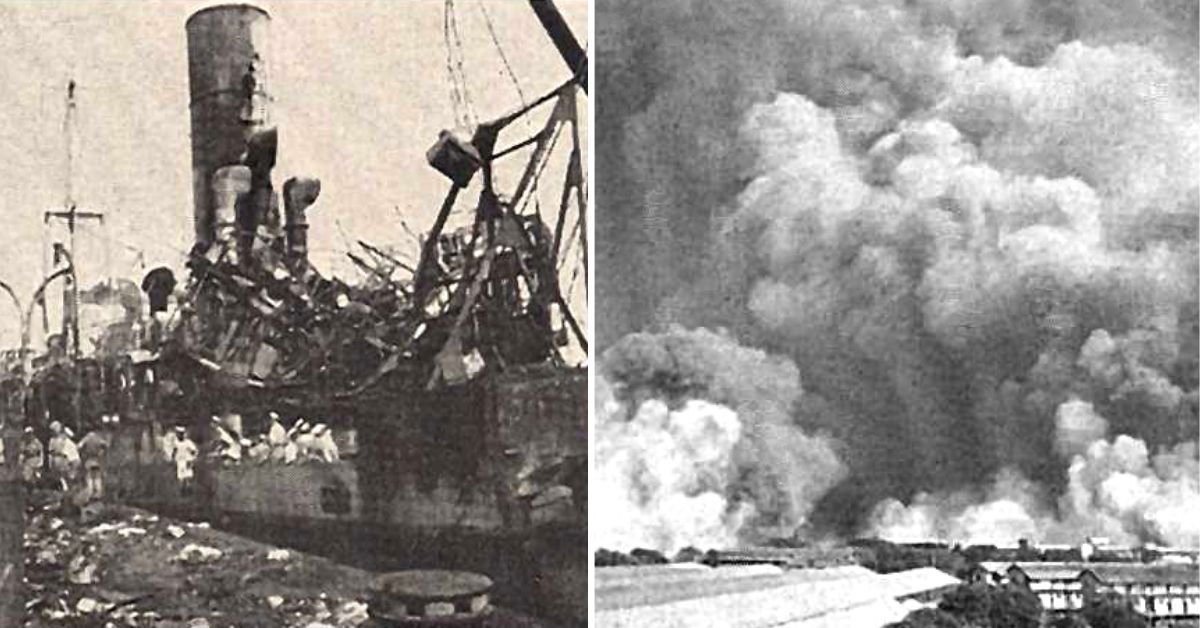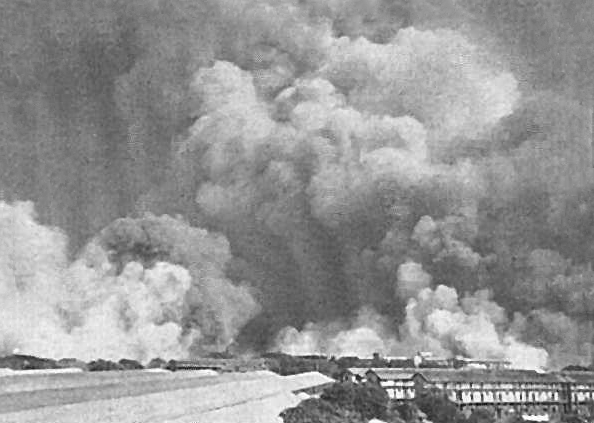Dock Explosion in Bombay: How 66 Brave Firefighters Died Battling The Flames
The blast killed over 700 people and injured 2,500 others. In the memory of the firemen who lost their lives, 14th April is observed as the Fire Brigade Day in Mumbai.

As I scroll through my news feed, a daily nighttime ritual, I come across videos and pictures with horrifying visuals. A thick grey cloud emanates from one spot and engulfs the peripheral areas leaving disaster in the aftermath. I speak of the massive explosion that rocked the port area in Beirut, the capital city of Lebanon.
The President of Lebanon informs that the cause of the explosion is the 2,750 tonnes of ammonium nitrate stored in a warehouse for close to six years. Currently, officials say that 100 people have died and over 4,000 people have been injured.
This blast is strikingly similar in nature and magnitude to the Bombay Dock explosion of India on 14 April 1944. The blast killed over 700 people and injured 2,500 others. Over 66 firefighters in the city too lost their lives trying to put out the deadly fire. In the memory of the firemen who lost their lives, 14 April is observed as the Fire Brigade Day in Mumbai.

Experts and historians have done extensive research on the tragic explosion. In conversation with The Better India (TBI), they give us more insight into what actually transpired that fateful day 76 years ago.
Peak of wartime
Fleur D’Souza, retired Head of the History Department from St. Xavier’s college in Mumbai had been conducting research on the Mazagaon dock when she read about the 1944 explosion on Victoria Dock.
Fleur says the explosion took place at a time when World War II was at its peak. In India, the Battle of Imphal had been ongoing. Here, the Japanese armies were attempting to invade India and attacked the Allied Forces in Imphal, Manipur.
The origin of the fire in the 1944 explosion is traced back to Fort Stikine, a cargo ship that had docked on the port. The Canada-built cargo ship weighing 8,000 tonnes left Birkenhead, England on 24 February. Since it was wartime, the cargo was carrying ammunition as well as other essential items. The explosives weighed around 1,395 tonnes and comprised rockets, torpedoes, shells, bombs among others. Sources also inform that 300 tonnes of trinitrotoluene also known as TNT was stocked inside the cargo.

The ship stopped at Karachi before arriving at Bombay and items like cotton bales, timber, oil, among others were loaded into the cargo. The cargo also contained 31 wooden crates containing gold bullion in bars (or ingots) worth £890,000, which were sold by the Bank of England to the Indian government.
Commander Mohan Narayan, retired naval officer and former curator of the Maritime History Society, has done extensive research on the 1944 Bombay Dock explosion. He says that when the ship entered the dock area on 12 April 1944, it was an ‘encore’ waiting to happen.
“Before WWII began in 1939, there were regulations in place that stated that no ammunition could be disembarked in the dock areas. Ships were usually anchored far away from the dock and smaller vessels called ‘lighters’ were sent from the dock to unload any kind of ammunition. But with the war, there was a relaxation in the regulations and with a certificate of urgency, these cargoes containing ammunition were allowed to dock in the area,” he informs.
He also informs that since it was wartime, every inch of the space available was made use of because transportation of goods at the time was crucial. Which is why items like lubricating oil or cotton bales shared the same space as the ammunition.
Chain of events
The ship reached Victoria Docks on 12 April and unloading of the goods began the next day.

“Ideally, the ammunition should have been disembarked immediately and not stored on the port. But, the stevedores weren’t aware that the cargo was carrying ammunition. The ammunition removal only began around 4 pm on 12 April and by the end of the day close to 1000 tonnes of ammunition still remained on the ship,” informs Commander Mohan Narayan.
Reports also say that minor errors like the leakage of fish manure and oil drums that were overlooked were one of the several reasons that led to the massive explosion.
“The explosion took place around 4.06 pm but the fire was observed much earlier and they had been trying to put it out. There were many aberrations that took place one after the other,” states Fleur D’Souza. The fire first broke out at 12.30 pm and around 12.45 pm smoke was seen to be emanating from one of the ventilators of the ship.
It was only at 1.45 pm that Mohamed Taqi, a stevedore, observed the smoke and immediately raised an alarm to alert his crew. Pumps were directed to the ship and when the fire kept on increasing the fire department was alerted but they were allegedly not informed that explosives were involved in the fire.

“After the fire began spreading, they wanted to make a hole in the ship so that it could be sunk and the fire contained. But, the equipment that could enable them to do this also malfunctioned that day,” informs Fleur D’Souza.
There were attempts at removing the sulphur and other detonators but the ship containing large amounts of ammunition could not be sunk by flooding. Some sources state that the depth of the water prevented it while others inform that valves of the ship were designed in a manner to let water out and not the other way around.
By 3.15 pm, the cotton bales and the explosives caught fire and as the fire spread, an explosion was heard at 4.07 pm.
Historian Rafique Baghdadi was only a four-month-old baby when the blast took place and has since then heard the tales of devastation by his parents.
“My parents were living in Tadwadi at the time (in Mazgaon, not very far from Victoria Dock) and she recalls how she took shelter in a building. There were rumours at the time that it could have been an attack by the Japanese but when the news was out, the rumours were put to rest,” he informs.
So, who was really responsible for the blast?

“It was not one person who could be blamed for this. It was a collective failure and series of blunders that led to this disaster,” says Commander Mohan Narayan. He further informs that there was a second explosion that took place at 4.40 pm. The metal particles were lifted 3,000 feet in the air and spread across 1,000 yards, he says.
“Several people lost their lives that day. A propeller from the site flew and landed in a school almost two km away. So you can imagine the magnitude. All the warehouses in the dock area caught fire and there had been a tremendous economic loss too,” Fleur D’Souza says.
In the aftermath of the blast, firefighters continued to fight the spread of fire. “For three days and three nights on Mohammed Ali Road so that the fire would not reach the residential area. This really helped prevent further damage,” he emphasises.
In remembrance of the firefighters who lost their lives and those who continued to contain the fire, 14 April is observed as the National Fire Service Day in India.
Additionally, National Fire Safety Week is observed across India from 14 to 21 April.
(Edited by Saiqua Sultan)
Like this story? Or have something to share?
Write to us: [email protected]
Connect with us on Facebook and Twitter.
If you found our stories insightful, informative, or even just enjoyable, we invite you to consider making a voluntary payment to support the work we do at The Better India. Your contribution helps us continue producing quality content that educates, inspires, and drives positive change.
Choose one of the payment options below for your contribution-
By paying for the stories you value, you directly contribute to sustaining our efforts focused on making a difference in the world. Together, let’s ensure that impactful stories continue to be told and shared, enriching lives and communities alike.
Thank you for your support. Here are some frequently asked questions you might find helpful to know why you are contributing?


This story made me
-
97
-
121
-
89
-
167











